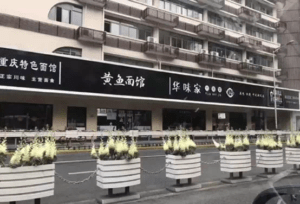Sollinger reviewed the economic development policies adopted by CCP since the establishment of China in 1949, and the corresponding management policies on the streets, focusing on the embarrassing and terrible living conditions of the urban poor especially. Personally speaking, I have always regarded vendors on the Chinese streets as a symbol, of which people’s opinions can reflect a fragmentation of value systems in the current society. Sollinger gave such phenomenon a great description: “For Western societies can hardly be seen to exclude those misfits more decisively than better-off Chinese urbanites and their political elite scorn older and unskilled, discarded workers who are victims of the scourge of poverty.” (Pp. 18) The views on street vendors on social media platforms are always polarized: Some people sympathize with their situation and reflect on the roots of their tragedies; While others condemn them for not striving hard enough to learn knowledge and skills, so they deserve to be abandoned by the high-quality job market. Obviously, the latter’s mental model is not innate, but a product under the influence of economic environment and the governing model. Therefore, the authority should be the object of blame for the urban poor’s long-term tragedy.
It’s intriguing to read the author’s discussion about the “Right to the City “of the urban poor. Actually, I’m wondering who is the “master” of the city? Do we really have a say in the management of urban streets? In recent years, a majority of cities in China have launched actions to unify street shop signs. We gradually discovered that the distinctive shop signs on the street have become exactly the same reproductions, and they are completely indistinguishable without looking closer. In the discussion on this topic, the public showed an amazing consistency: the vast majority of people are criticizing this one-size-fits-all policy, believing that it harms the diverse and vitality of the streets. What is confusing is – how can such an important measure that is closely related to the lives of urban residents be carried out on a large scale without soliciting public opinions? Earlier, an anonymous netizen took a photo of a shop sign after the unification on Changde Road in Shanghai, the black-and-white color schemes of which were particularly lifeless and ugly. After causing a wide range of public opinion discussions, the relevant government departments immediately covered up all signs and stated that they would renovate them. However, why don’t they conduct a public opinion survey before the implementation of the project, and how can such a poor design pass the approval?

Black and white shop signs on the Changde Road in Shanghai
Moreover, the problem about “chengguan” shows a deeper separation between the upper authorities and the grassroots people. Just as Solinger said, chengguan had a period of violent law enforcement in history, and their behavior is typically painted as “beating an unlicensed hawker or smashing a street vendor’s stand”. (Pp. 19) But a post on Zhi Hu (a famous virtual social community for various discussion in China) changed my view several years ago. (Read the post here) Responding to a question about the street food, the user described his experience as a grassroots staff, chengguan, in detail. According to him, this group was stigmatized and misunderstand by the mass in China for a long time. They need to rush to check the stalls in various places with harsh environments every day, and his team has just discovered two street stalls with severely unqualified sanitation, from which they have confiscated illegal raw materials such as gutter oil. Consequently, he offered suggestion for people to eat less street food and expressed being aggrieved by such stigmatization. Indeed, media reports and political propaganda in this era should not continue to intensify the contradiction between chengguan and vendors. We all know that this is essentially a contradiction between the social system/city management and the urban poor. To solve this problem, we may still have a long way to go.
Leave a Reply